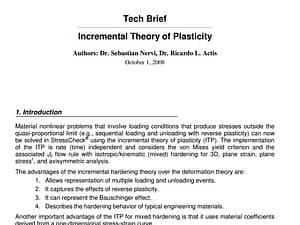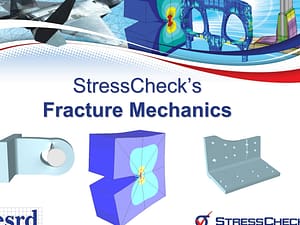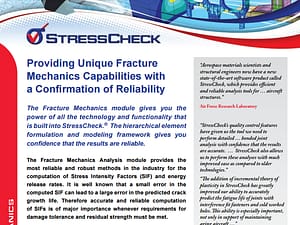J-Integral Decomposition Technical Brief
Abstract: The computation of the energy release rate has been used for many years to determine the onset of crack propagation. In recent years, the use of composite materials has become common practice in the aerospace industry and correlating the energy release rate with crack propagation, originally developed for isotropic materials in a 2D setting, is now been extended to structures made of laminated composites. For most cases of interest, the energy release rate has to be computed in a three dimensional setting for bi material crack interfaces and orthotropic material properties. Moreover, given the typical complexity of the displacement and stress fields associated with composite materials, the analysis requires the computation of the energy release rate components associated with each failure mode (i.e., Modes I, II and III).
 Serving the Numerical Simulation community since 1989
Serving the Numerical Simulation community since 1989 





